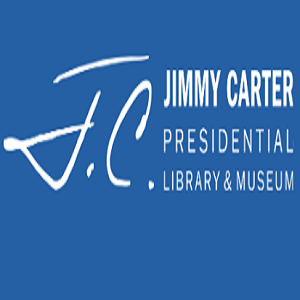Jimmy Carter Presidential Library and Museum
Jimmy Carter was the 39th American president between 1977-1981. Carter’s tenure as president overlapped with a wide variety of international events, particularly those associated with détente, or the de-escalation of the Cold War. He pardoned all American Vietnam War draft evaders on his second day in office, was instrumental in the Camp David Accords between Israel and Palestine and the Panama Canal Treaties, and was engaged in the Strategic Arms Limitations Talks. Towards the end of his presidency, Carter was involved with the 1979 Nicaraguan Revolution, the 1980 Soviet invasion of Afghanistan, the Carter Doctrine, a grain embargo against the Soviets, the 1980 Olympics boycott, and the Iran Hostage Crisis. After his tenure as President, Carter established the Carter Center to promote human rights globally, work which eventually earned him the 2002 Nobel Peace Prize. His Presidential Library is located in Atlanta, Georgia, the capital of his home state. The Library has extensive educational resources, primarily lesson plans, most of which are focused on Carter’s domestic policies in the United States. However, due to Carter’s enormous international impact, the Library also offers resources for teaching those aspects of his presidency.
Some of their links are defunct. For example, the Library advertises a collection of lesson plans and documents surrounding the President’s travels, in which a few units are dedicated to his international work, including the Panama Canal Treaties, Camp David Accords, Iran Hostage Crisis, Election Monitoring globally, Liberian democracy efforts, and several units on the Carter Center. However, we found that none of the links work.
However, many of the links do work. Also included in their lesson plans, though in a separate database, is their unit on the Panama Canal Treaties, intended to teach students how treaties are ratified. This lesson includes objectives, standards alignments, skills, suggested grade levels, a variety of suggested lessons and introduction materials, as well as student materials. Among the student materials are a number of linked primary source documents with discussion questions. The lesson ideas include document analysis, debate role play, and political cartoons. Teachers could use any of these lessons individually or all of them.
Though most of their resources are for middle and high schoolers, the Carter Library also offers a few lesson plans for elementary students. These include International Paint Pals units including Teamwork which guides young students through primary source analysis in pre-made worksheets designed to make them think about peace.
International Paint Pals also has units for older students on Family, Culture and Traditions and Stewardship.
In addition to the Library’s own resources, they also link to the Carter Center’s educational resources. These include a number of lesson plans for middle and high school. The lesson plans cover every continent and topics from democracy to disease. The primary focus is on democracy and global conflict resolution. Each lesson includes a stated purpose, goal for student understanding, performance expectations, skills, time and material requirements, a detailed procedure, and extension ideas for further learning.
Finally, the Carter Library offers three Document-Based Question practice questions for the AP US History Exam. Though the questions are designed to prepare students for the APUSH exam, they are all related to global history and therefore could be used in a global history high school classroom.
Overall, the Carter Library offers a variety of lesson plans for mostly middle and high schoolers, most of which are focused on President Carter’s domestic policy, but some of which engage with his international legacy in conflict resolution. Though the links do not work in one of their databases, the other resources seem well-suited to global history classrooms. The advantage of pre-made lesson plans is that each of these lessons comes with suggestions for how to implement as well as pre-written standards alignment statements which may make it easier for educators to insert them into a semester. However, because the lessons are pre-made, educators may find them less useful than unvarnished primary source resources if they do not fit with your teaching style or your students’ learning style.
